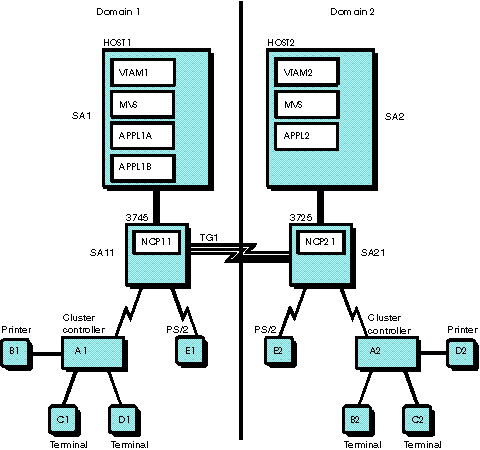 z/OS Communications Server: SNA Network Implementation Guide
z/OS Communications Server: SNA Network Implementation Guide
 z/OS Communications Server: SNA Network Implementation Guide
z/OS Communications Server: SNA Network Implementation Guide
|
Previous topic |
Next topic |
Contents |
Contact z/OS |
Library |
PDF
Implementing a subarea network z/OS Communications Server: SNA Network Implementation Guide SC27-3672-01 |
|
|
This topic contains information needed when more than one VTAM® subarea domain exists in the network. Implementing a VTAM network contained basic concepts and issues requiring consideration for each VTAM domain. This topic expands on Implementing a VTAM network to include multiple domain issues. A multiple-domain subarea network contains more than one system services control point (SSCP). Control of the resources in the network is divided among the SSCPs. Defining your VTAM network involves identifying your domains and defining the resources in those domains to the SSCPs. Note: A VTAM host contains
a host CP, even if you have defined your VTAM as a subarea node and not as an APPN node.
This host CP is used for management services transport and is not
used for session setup or routing.
Figure 1 is the same as the configuration in Figure 1, except that this is a multiple-domain network because it includes another host. Note that NCP12 is now NCP21. This is for naming convention purposes. Figure 1. Multiple-domain network
 Code everything that you would code to define the network in Figure 1, except that you need to put the
definitions for NCP21 and its peripheral nodes in HOST2 rather than
in HOST1. You also need to code at least the following in HOST2:
Also code at least the following in HOST1:



|
 Copyright IBM Corporation 1990, 2014 Copyright IBM Corporation 1990, 2014 |